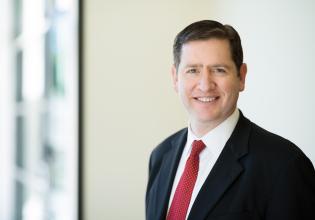
Ynano’s Artificial Glands
On July 2, 2018, the Federal Circuit Court of Appeals affirmed the decision of the Patent Trial and Appeal Board holding that some of the claims relating to artificial glands and various methods of creating them were not “enabled” by the specification of the application and other claims were not properly appealed. See In re: Marquez, Appeal No. 2017-2038 (Fed. Cir. 2018).
U.S. Patent Application No. 12/726,158 (“the ‘158 Application”) was filed in March of 2010, but claims priority to two provisional applications filed in 2009. The Examiner asserted (and the Patent Trial and Appeal Board later agreed) that certain claims were not enabled by the specification. For claims of a patent to be enabled, the patent application must describe the invention and “the manner and process of making and using it, in such full, clear, concise, and exact terms as to enable any person skilled in the art to which it pertains, or with which it is most nearly connected, to make and use the [claimed invention].” 35 U.S.C. § 112, ¶ 1 (2012) (emphasis added). Further, the person of ordinary skill in the art must be able to practice the claimed invention without undue experimentation based on the patent specification.
Claims 33 and 34 of the ‘158 Application each recite artificial glands with membranes made up of cellular components surrounding a bio-reactor. Claim 33 states:
33. An artificial gland of micro-scale for promoting biological activity, the artificial gland comprising:
components of a cell assembled in three dimensions and organized to form a membrane, the membrane configured to define an enclosed micro-scale volume; and,
a reservoir within the enclosed micro-scale volume, the reservoir comprising a bio-reactor capable of containing a product of activity of the components of a cell, wherein the reservoir comprises a substance selected from the group consisting of a gas, a liquid, and a gel.
The Board determined, and the Federal Circuit agreed, that the ‘158 application does not provide guidance for how to form cellular components into a membrane capable of surrounding a bio-reactor. The Board differentiated cells from cellular components and noted that forming membranes out of cellular components rather than cells requires manipulation of electrostatic forces that was not known in the art prior to the filing date of the ‘158 Application. The Federal Circuit further agreed with the Board that forming an artificial gland from cellular components capable of surrounding a bio-reactor would have required undue experimentation.
Additionally, with respect to 12 different claims relating to artificial glands with membranes composed of whole cells, the Federal Circuit agreed with the Board that Marquez waived its right to challenge the Examiner’s rejection of those claims by failing to include relevant arguments in its appeal brief to the Board.
The ‘158 Application appears to be assigned to Ynano, LLC, a small company located in Midlothian, Virginia. An application claiming priority to the ‘158 Application was filed on May 26, 2017 as U.S. Application No. 15/606,042 (“the ’042 Application”) and is still pending, so Ynano, LLC may get some claims issued that are enabled by the specification of the original ‘158 application.
While this is a non-precedential Federal Circuit opinion, it still illustrates the importance of having a detailed and complete specification.
